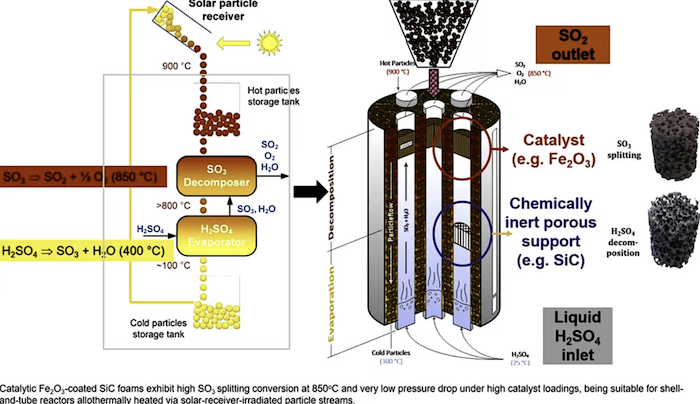Abstract:
Catalytic sulphur trioxide splitting is the highest-temperature (850–900 °C), endothermic step of several sulphur-based thermochemical cycles targeted to production of hydrogen or solid sulphur. The demonstrated capability of centrifugal particle solar receivers of heating particle streams at such temperatures, can allow for “allothermal” implementation of this step via the enthalpy of such particle streams in a catalytic shell-and-tube reactor/heat exchanger decoupled from a solar receiver. In this context, SO3 splitting catalytic systems shaped to spherical particles and flow-through honeycombs and foams were prepared and tested. Long-term (100–950 h) experiments with catalyst-coated SiC honeycombs demonstrated that oxide-supported Pt catalysts suffered from low conversion and severe deactivation at 650 °C, contrary to Fe2O3-coated ones. Fe2O3-coated SiC foams demonstrated reproducible near-equilibrium conversion at 850 °C, under a broad range of sulphuric acid flow rates, combined with minute pressure drop even under high catalyst loadings (35–45 wt %) being thus in principle suitable for eventual pressurized operation.
Agrafiotis, C., Thomey, D., de Oliveira, L., Karagiannakis, G., Tsongidis, N. I., Pagkoura, C., Alkan, G., Roeb, M., & Sattler, C. (2023). Structured sulphur trioxide splitting catalytic systems and allothermally-heated reactors for the implementation of Sulphur-based thermochemical cycles via a centrifugal solar particle receiver. Applied Catalysis B: Environmental, 324, 122197. https://doi.org/10.1016/j.apcatb.2022.122197
Published in the May Issue of Applied Catalysis B: Environmental















































